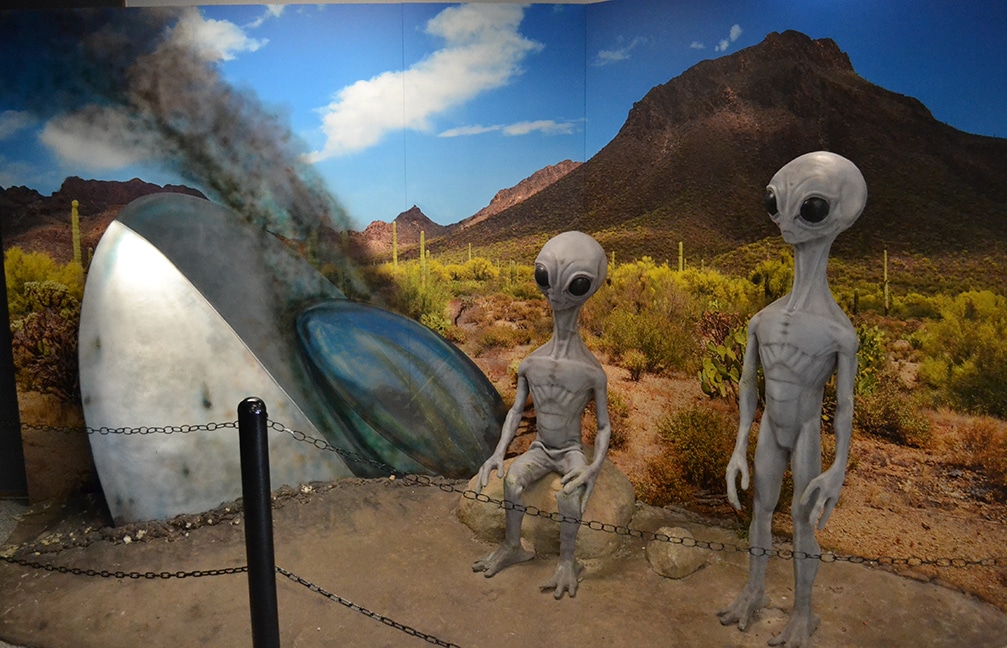Halloween and horror movies are filled with creatures designed to strike fear in the hearts of viewers—from those that drink blood in the night to insects that grow too large and develop a taste for human flesh and aliens that cross the universe intent on the destruction of humanity. But is there any truth behind any of these fantastical creatures? Turns out, the answer is yes, though the real deal is much more nuanced—and much more intriguing—than their Hollywood doppelgangers.

After spending a weekend in Roswell, New Mexico, to watch the solar eclipse—and pay a visit to the UFO Museum—Gavin Moriarty, president of NAU’s Astronomy Club, weighed in on alien life, a staple of scary stories. Is the research pointing more toward ET, Independence Day or Coneheads?
Answer: No. Let’s start with a little math because, Moriarty said, there is so much out there that sheer probability tells us there must be life somewhere. The current estimate is about a couple trillion galaxies within the universe. Each of those galaxies has hundreds of billions to trillions of stars. Each of those stars has, on average, at least one exoplanet. Is your head hurting yet? We can say this: there are a lot of exoplanets. It seems improbable for there to NOT be life in the universe. Whether that life is just microbial or a thriving civilization is another debate.
That takes us to the Fermi paradox: If there must be aliens out there, then where are they? And what are they? Moriarty picks the thread up: “In movies and literature, we usually see these intelligent beings as being these green or grey, rounded, somewhat humanoid beings. Sometimes, they are even shape-shifters that can look exactly like humans. I’ve known a couple people that wouldn’t surprise me if they were from another planet.
While this seems outlandish, it may not be that far off. If we follow the concept of evolution over time, then a habitable, Earth-like planet can be assumed to have gone through similar conditions to Earth—meaning, if we were to find life outside of some sort of microscopic microbial life, it would likely be some sort of variation of plants and animals we see on Earth. My mind typically goes somewhere like the Avatar movies. These exoplants and exoanimals would have evolved to suit their own needs to survive. Whether those animals have evolved like Earth to the level of intelligence as animals and humans we know here—that I would need to be convinced on.”
So, where does that leave us? We may never know. That might be better, Moriarty said; “unless the aliens are aggressive and want to hunt us and take over the world like we see in movies, my guess would be that they would leave us alone. If they are smart enough to find us, they would be smart enough to realize that contacting us would rock our world in unprecedented ways and could kill us or them.”


